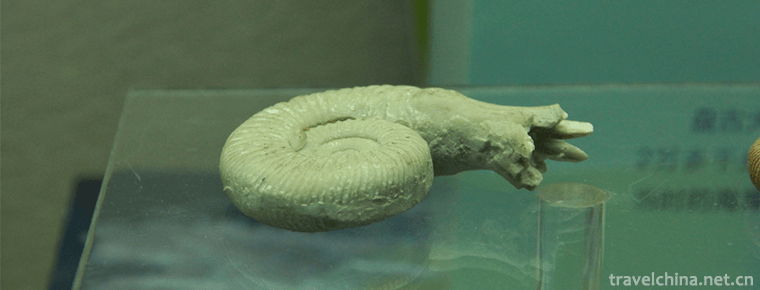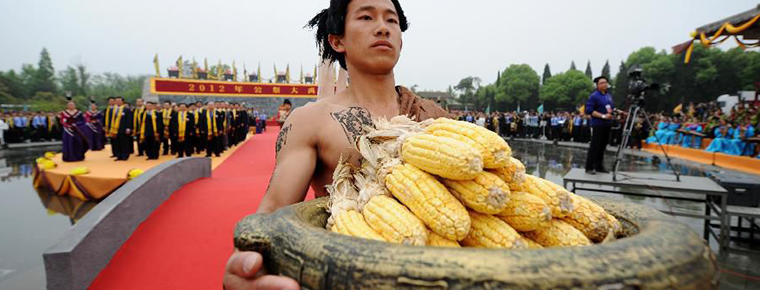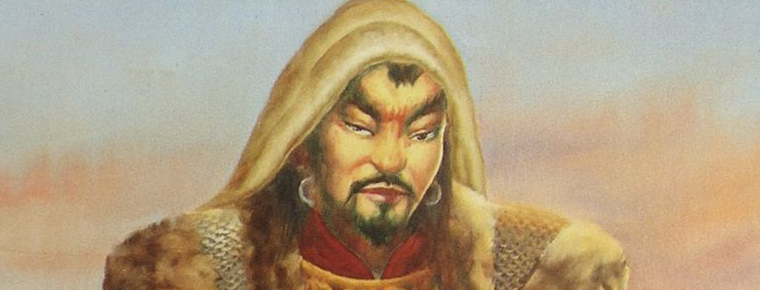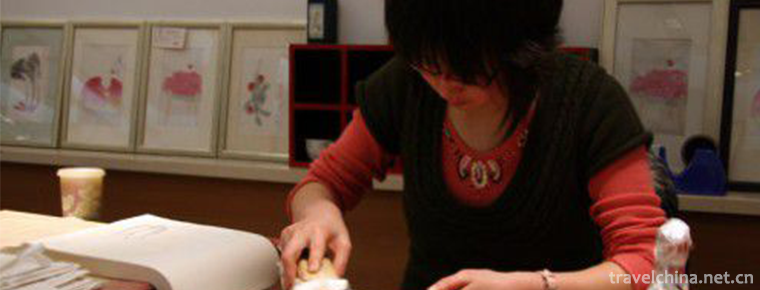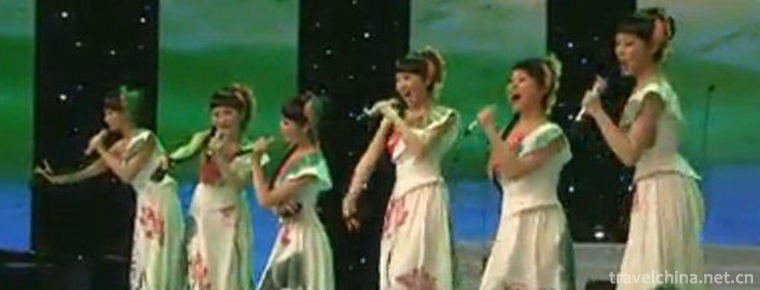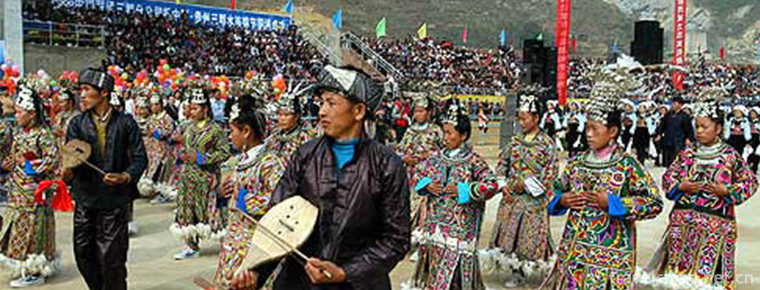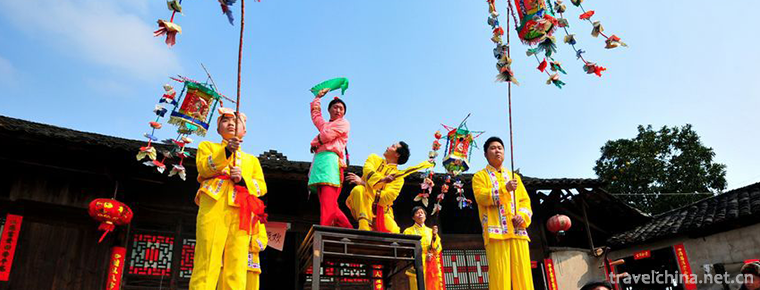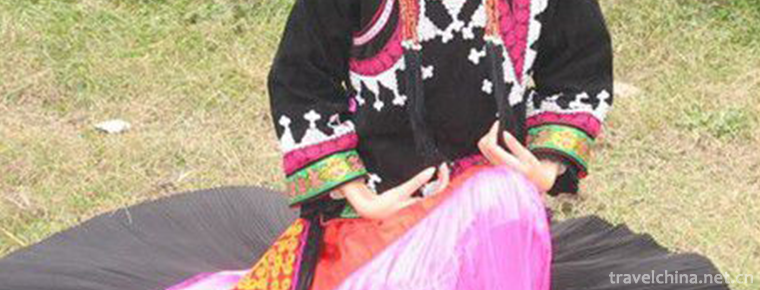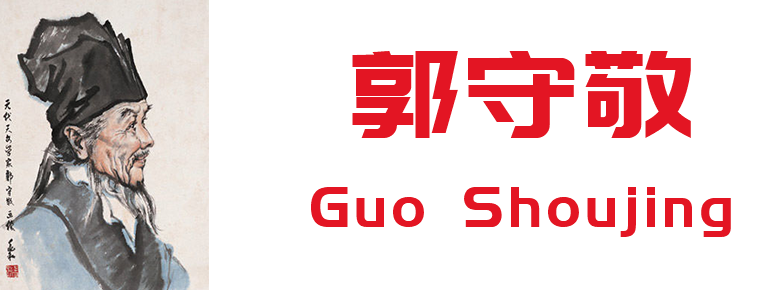Money board
Money board
Money board is a traditional rap art in Sichuan, Guizhou and other places. It originated in Chengdu and Chongqing more than 300 years ago, and gradually spread to Yunnan, Guizhou and other southwestern regions. The performer performed with three Nanbamboo boards about one foot long and one inch wide. Two of them are also embedded with copper coins or other metal pieces. When performing, bamboo plates strike each other and make metal sounds. Artists use them as props for performances. They often "go to the state to eat, go to the county to eat the county", commonly known as "money board". In addition, some people call it "Jinjian board", and others call it "Sancai board".
On May 23, 2011, the "Money Board" declared by Wanzhou District of Chongqing was listed in the third batch of national intangible cultural heritage list with the approval of the State Council. Heritage serial number: 784 V-91.
historical origin
Money board, also known as "Three Talents Board", "Gold Sign Board". Formed in the early Qing Dynasty.
The Book of Changes says that "Tao has Heaven, Tunnel and Humanity" are represented by three bamboo boards. It is widely used in all parts of Bashu. The money board is made of Nanbamboo slices about one foot long, one inch wide and 0.25 inch thick. There are three pieces in total. In order to make the bamboo board sound, small copper coins are embedded in the board. As accompaniment instrument and performance props.
The artist beat the different parts of the two boards in his left hand rhythmically with a piece in his right hand. Its sound gives people a fresh, clangorous and harmonious music sense. After a minute or two of hitting, the artist began to sing in the rhythm of the money board. Use dialects and dialects more often, instead of singing, strict requirements, rhyme sentences, and a rhyme to the end, not rhyme halfway. Each lyric, mostly seven-character sentences, cross sentences, can also be used in short and long sentences, so that the singer can sing rhythm to achieve "three pauses".
Language should be easy to understand, vivid and powerful, usually expressed in Sichuan dialect, Xiehouyu, proverbs and onomatopoeia, but not vulgar and elegant.
In the process of historical change, the traditional folk performing art of Qianban has become a basic stunt in northern Sichuan. Fortunately, Jiang Bingrong, a money board performer born in Panlong Town, Jialing District, has been learning art since childhood with his brother Jiang Bingkui. Walk through villages, courtyards, dams or tea houses to perform skills for the masses. He is determined to inherit this folk art and make it more elegant.
artistic characteristics
Like other rap arts such as book reviewing and lotus flower falling, the money board initially drew a circle at the busy rural intersection to attract customers.
As more and more people like it, it gradually developed into a teahouse performance. In addition, the props are simple, that is, several bamboo boards, one actor, the mechanism is very flexible, very suitable for performing in the teahouse.
So later, the money board was mainly performed in the teahouse. In the process of the development of the performance art of the money board, because of the artists'continuous creation and summary, its performance techniques are constantly enriched and improved. It is also divided into "flower school", "Qing school" and "miscellaneous school" according to different techniques. Among them, the style mainly highlights the slab beating skills and eyebrows and bodies, performers often play three bamboo boards to and fro to imitate the sounds of nature, rich in thousands of changes, amazing; the money board of the Qing school mainly pays attention to the word-pronunciation, the right tune, full of neutrality, and steady rhythm of rap; while the miscellaneous school basically combines the strength of the Qing school and the style of the flower school, paying attention to both the slab beating. In rap, the law pays attention to rhythm change, flexibility, speaking in singing, singing in speaking, interlacing long and short sentences, fast and slow and free.
Mode of performance
The performer holds three boards made of Nanbamboo heads, beats while rapping, sings while singing and performs. Money board is made of bamboo or bamboo. There are three pieces, each 30 cm long, 3.3 cm wide and 0.5 cm thick. Two of them are inlaid with small copper coins or metal sheets, hence the name "Money Board".
Its singing tone is processed and reformed by the former artists on the basis of some high-pitched songs in Sichuan Opera. Money board is singing by one person. The lyrics are seven-character or cross sentences. It can also be stretched and combined according to the content. Money board can play 9 different rhythms and sounds.
The traditional bibliographies of the money board are "long books" such as "Three Kingdoms", "Water Margin" and "Touring the South of the Yangtze River". There are also two or thirty passages drawn from folk fables, stories and jokes, called "Poetry Head". In the traditional bibliography, there are three sections of "Buying Rice Books" which can attract the audience most, namely "Wusong Catching-up Meeting", "Wusong Fair Temple", "Wusong Dadian Shop".
Traditional bibliography
Representative works: Wu Song Catching up, The Blind Man's Fortune-telling, The Goodman, Tongue Twisting, Eighteen Talks, The Truth, Little Vegetable Fighting, Two Helps, Entrapment, Surge Danxin, Honghu Kaige, Two Guns Old Lady and Chicken Stealing.
Inheritance and protection
Walk into campus
Seventy-day-old man, into the mountains to offer art, love at first sight
In October 2005, Comrade Shi Shengrong, a retired veteran cadre of Jiajiang County Cultural Bureau, was invited to Xiama to attend the inauguration ceremony of the Association. At the ceremony, Shi Lao's wonderful money board performance attracted the old, the young and the old in the mountainous area, and at the same time stirred the heart of Shen Hongwu, then the headmaster of Xie Xiao School. After a friendly conversation, Mr. Shi came to the school to give performances to all teachers and students and impromptuly tried to teach some children. The enthusiasm of the students made Mr. Shi very excited. He said, "I am looking for apprentices everywhere to pass on the money board, the treasure of folk art that I have learned all my life. Today I found it and found a large group of apprentices." As you can see, the students have fallen in love with the money board. From then on, Mr. Shi has been "happy not to think about Shu" and devoted himself to teaching his students. He has formed an indissoluble bond with the students of Xiema Primary School.
Starting from October 2005, Mr. Shi Shengrong took advantage of weekend two-day rest days to train children more than 30 times by bus, trekking mountains and rivers, and going to school on a mountain road with a peak of more than 80 miles. Mr. Shi Shengrong is now six in seventies. He has followed Zou Zhongxin, the winner of the Peony Award for Lifetime Achievement of Chinese Quyi and a master of Sichuan folk art, to learn money board. He is deeply loved by Zou Zhongxin, and is now a few money board artists in Sichuan Province.
Money board is a kind of folk art formed in Sichuan during the Qing Dynasty. It is named for the bamboo board with several copper coins. It is customary for one person to perform, first with three Nanzhu boards for a unique stage, and then play, sing, say, perform a combination of speaking and singing, singing and speaking, singing and singing, singing almost Sichuan opera charm. That easy-to-understand but interesting lyrics; praise the truth, goodness and beauty; lash out false, evil and ugly; disseminate common sense of life; persuade the prodigal son to turn back; carry forward social righteousness.
Since Mr. Shi Shengrong came to Xiama Primary School, he has organized three stages of trainees and trained more than 200 students. From grade two to grade two, junior high school students take the initiative to participate in the school almost every day can hear students use the rest time to perform and practice. School leaders and teachers are very fond of and attach great importance to the management of money board classes. Under the leadership of the headmaster, the teaching director directly organized three teachers with strong sense of responsibility and careful work to cooperate with the training of history teachers. It can be said that the art of money board has become the most extensive, popular and valuable content of students'recreational activities. Over the past two years, Mr. Shi Shenglong has mainly taught them about the resume, characteristics, performing methods (beating, singing, speaking and acting) of Qianban art. He has also made a brief introduction to creative methods, paying special attention to Ideological Education - promoting righteousness and flogging evil. I have learned many passages such as "Good Children", "Shulang", "Eight Honors and Eight Shames", "New Countryside", "Playing Brother" and so on. One minute on stage, ten years off stage. All the students from the board - learning singing - performance, step by step to today, almost able to perform a few paragraphs by themselves, are decent!
Over the past two years, the school money board class has made gratifying achievements: twice participating in the county primary and secondary school talent contest, the county Party committee and county government organized "July 1" literary and artistic evening, the launching ceremony of the theme activities of "new countryside and new youth" in Jiajiang County, Jiajiang Golden Coast Art Festival, Fengshan New Countryside Construction, Leshan Folk Art Congress, etc. Children's performances have been recognized by all walks of life. Jiajiang Culture Bureau, Jiajiang Newspaper, Jiajiang TV Station, Leshan Newspaper, Leshan Evening News, Leshan TV Station and Leshan Wenlian have been to the school for many times to make special films. Money board art is actively declaring the state-level "intangible cultural heritage". The treasure of traditional opera art, money board, will continue to be inherited and carried forward.
The performer holds two bamboo boards in his left hand and one bamboo board in his right hand to beat rhythm and sing stories. It is named for two bamboo boards with bronze coins embedded in them. It is also called "Dalian 3", "Sancai board" and "Golden Sign board". It is popular in Sichuan and Zunyi, Tongren and Bijie of Guizhou. It was formed during the Tongzhi period of the Qing Dynasty and became popular after the Republic of China. The lyrics of the money board are easy to understand and the last sentence of the paragraph is slightly procrastinating. The rhythm of sentence pattern change is distinct, and the number of words per sentence is unlimited.
Inheriting Quyi and Welcoming the Olympic Games
The left-behind children in Leshan City, Sichuan Province learn the money board to welcome the Olympic Games. In Limin's home in Jiajiang County, Leshan City, Sichuan Province, 23 Left-behind Students insist on learning the money board here every day to welcome the coming of the Olympic Games in a special way.
Under the professor of Shi Shenglong, children learn the precious traditional art of money board. In order to welcome the Olympic Games in Beijing, Mr. Shi also wrote a section "Praise the Beijing Olympic Games" for the students, so that the children can further develop the spirit of loving the motherland and the people while carrying forward the folk arts.
Students who took part in the study said that learning the money board here not only enriched their vacation life, but also cultivated their sentiment and deepened their understanding of traditional art. Some of the 23 students have been practicing the money board for more than a year. As the inheritor of the monetary board of Leshan intangible cultural heritage, Shi Shenglong's teaching is completely free of charge, all originated from his love and persistence for traditional culture. He wants to let more children learn this precious folk art in this way, and hopes to develop the inheritor, so that the art of monetary board can not be forgotten and carried forward.
Related awards
"Yuefei Advising Friends" was awarded the third prize of "Bashu Literature and Art Award" in Sichuan Province in 1999.
In 2007, the first "Master of Golden Lotus (Money Board, Lotus Leaf)" performance was held in Chengdu Museum of Mass Art. Zou Zhongxin, 83, the winner of the 2006 China Quyi Peony Award for Lifetime Achievement, has lost his sight, but still passionately performed Qianlong Naohe Dam, a money board.

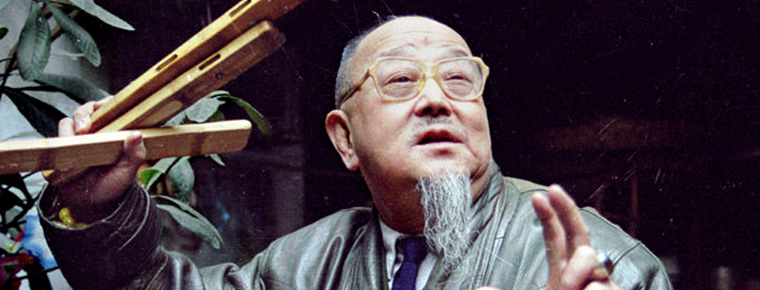
-
Chengjiang biota
Chengjiang biota is located near Maotianshan, Chengjiang, Yunnan Province, China. The stratum of Chengjiang biota is yellow-green silty shale of Yudanshan section of Qiongzhusi Formation of Lower Camb.
Views: 147 Time 2019-01-05 -
Da Yu memorial ceremony
The Dayu Festival is an ancient Chinese traditional folk sacrificial activity. Dayuling is located in Huiji Mountain, southeast of Shaoxing City, Zhejiang Province. Dayu Mausoleum is the burial place .
Views: 94 Time 2019-04-23 -
Jangar
Jianger Jianger, the local traditional folk literature of Xinjiang Uygur Autonomous Region, is one of the national intangible cultural heritage..
Views: 121 Time 2019-05-05 -
Wood Watermarking Techniques
Wooden watermarking is mainly made by such basic technological procedures as hook (sub-plate), engraving (plate-making), printing (printing) and special techniques as engraving, picking and dusting..
Views: 155 Time 2019-06-06 -
Qianjiang Folk Songs
Qianjiang folk song is a traditional folk song in Hubei Province. Popular in Qianjiang City, folk songs created by local working people in their work, life and customs. Its rich content,.
Views: 293 Time 2019-06-10 -
Shuizu Duanwu Jie
The aquarium duanjie is called "borrowing duanjie" in the language of water. "Duan" means "the first year of life" or "New Year", "borrow" means ".
Views: 165 Time 2019-06-16 -
Xiushan Festive Lantern
Xiushan lantern is an important school of lantern art in southwest China. It is a folk cultural phenomenon and folk performing art that integrates religion, folk custom, singing and dancing, acrobatic.
Views: 80 Time 2019-07-08 -
Yazhou Folk Songs
Yazhou folk song is one of the ancient folk songs in Hainan Province. It is popular in the areas of Yazhou and Dongfangkangcheng, west of Sanya Yacheng and east coast of Ledong. Yazhou Guest (Han) dia.
Views: 183 Time 2019-07-10 -
Yi dress
The costumes of the Yi nationality are colorful, unique in style, and have nearly 100 kinds of shapes. Historically, because of the numerous branches and scattered residence of the Yi people, there ar.
Views: 174 Time 2019-07-12 -
Tie dyeing skills
Tie-dyeing, known as Zha Val, Ge Val, Jia Val and Dye Val in ancient times, is a traditional and unique dyeing process of Chinese folk. A dyeing method in which fabrics are partially tied up so that t.
Views: 142 Time 2019-07-16 -
Guo Shoujing
Guo Shoujing (1231 - 13 16). Xingzhou Xingtai county (now) Hebei Province Xingtai City People. Yuan Dynasty Famous astronomers, mathematicians, experts in Hydraulic Engineering Early teacher Liu Bin Z.
Views: 286 Time 2019-09-07 -
Tianshi cave
Tianshi cave, also known as Chang Taoist temple, is the most important Taoist temple in Qingcheng Mountain. In 1983, it was designated as the national key Taoist temple by the State Council. In addition, there are four palaces in Qingcheng Mountain: Jianfu palace, Yuanming palace, Yuqing palace and Shangqing palace..
Views: 321 Time 2020-11-08
